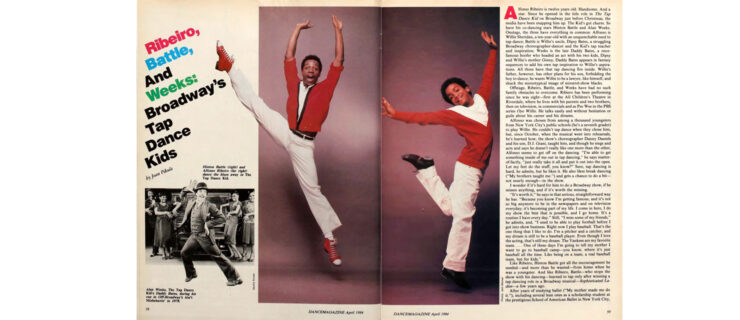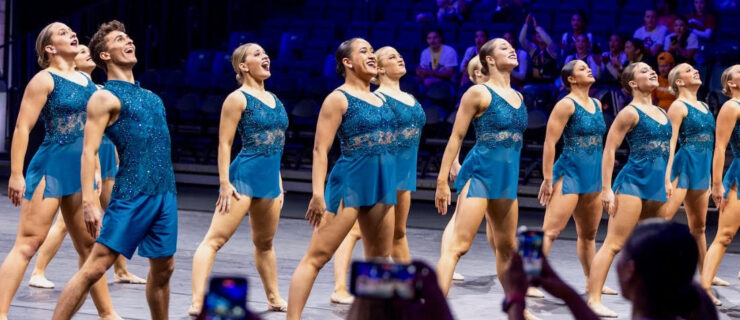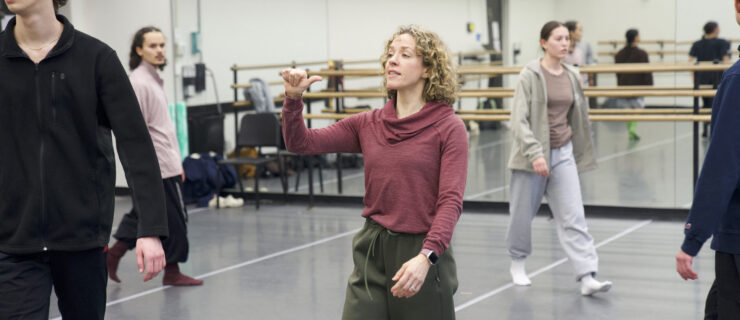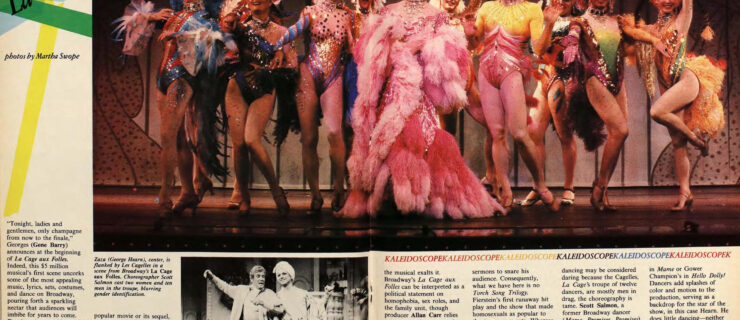Curtain Up
Many of us
have a moment in our lives when we say, beyond a shadow of doubt, “I want to dance; I need to dance.” It may be a loud proclamation or a private whisper; it may come on suddenly or gradually. But it’s undeniably there. It becomes so much a part of our lives that it’s hard to articulate all the feelings that were stirred up by that one experience.
For Abigail Rasminsky, that moment came when, as a 4-year-old, she saw the Paul Taylor Dance Company perform Esplanade at Jacob’s Pillow. In “The Earth Moved,” she eloquently describes her exhilarated response. And 25 years later, she revisits the same dance with nervous anticipation. I think it’s one piece of writing will make you laugh and cry at the same time—as Esplanade itself is capable of doing.
Kathleen Breen Combes has wanted to dance ever since she can remember. Luckily for audiences of Boston Ballet, she is getting to perform plenty these days. With a repertoire that ranges from Myrtha in Giselle to Jorma Elo’s jagged Brake the Eyes (to be seen this month at New York City Center’s Fall for Dance festival), she is delighting both choreographers and critics. She can bring a chilling authority or a buoyant freshness to the stage. She soaks up all the coaching opportunities she knows will enrich her dancing—clearly a dancer who is on the verge of great things.
For the Costume Preview
, our annual salute to the new season’s costumes, Khara Hanlon, our intrepid “DM Style” editor, has chosen the theme of Night and Day—lyrics included. In addition, we have “The Story of the Tutu,” which traces the development that quintessential ballet garb since Marie Taglioni donned one in 1832. And just for fun, in “Witchy Women,” Lea Marshall takes a look at some of the scariest creatures in classical and modern dance.
A good college
or university dance program not only trains dancers, but also provides a bridge to the real world of dance. In this month’s “Teach-Learn Connection,” Jennifer Stahl, our trusty education editor, writes about New York University’s famed Tisch School of the Arts dance department. Jenny, who graduated from the program last year, doesn’t have to dig very far to find out why so many of her peers have gotten jobs already. Simply put, it’s connections. Read “The NYU Network” to get a picture of how this works. The dance community looks out for its own, and Tisch is an example of how people help each other up and down the generations.




